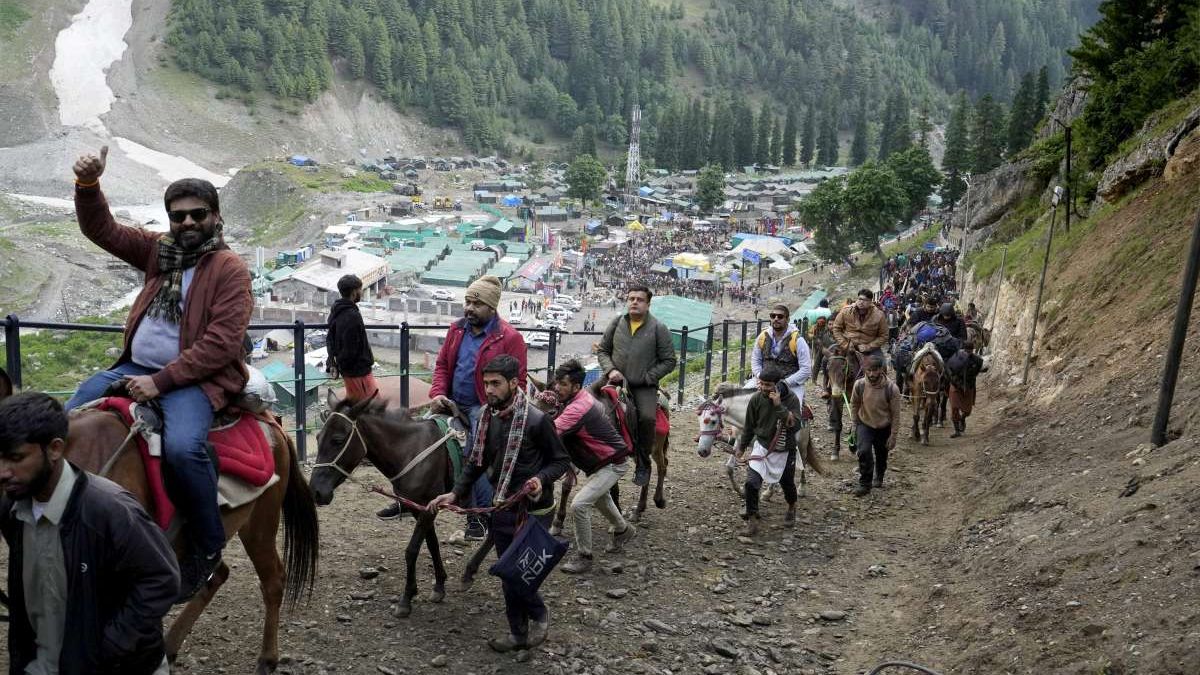Thousands of pilgrims from around the country embark on the Amarnath Yatra every year.
The Shri AmarnathJi Shrine Board (SASB) has said that the yatra will take place from today (July 3) to August 9 and have a daily cap of 15,000 pilgrims.
Pilgrims travel to the holy cave of Amarnath in Jammu and Kashmir’s Anantnag district, where a natural ice Shivling representing Lord Shiva forms every year.
Located 12,700 feet above sea level, the yatra is a test of pilgrims’ physical, mental and spiritual strength.
Pilgraims between the ages of 13 and 70 who have no significant heart, respiratory or other serious health issues can undertake the yatra.
Visitors can choose between two distinct paths to the cave – the ancient Pahalgam route, known for its extended journey and breathtaking scenery or the more demanding Baltal route from Sonmarg, which, while shorter, presents a steeper and faster ascent.
On April 22, 2025, five terrorists opened fire on tourists in Baisaran Valley, Pahalgam , killing 26 civilians.
Due to this, the security has been beefed up in the region with nearly 50,000 Central Reserve Police Force (CRPF) personnel deployed along with Jammu and Kashmir Police.
The Amarnath Yatra is considered to be the hardest pilgrimage in India.
But what makes it such a difficult undertaking?
)